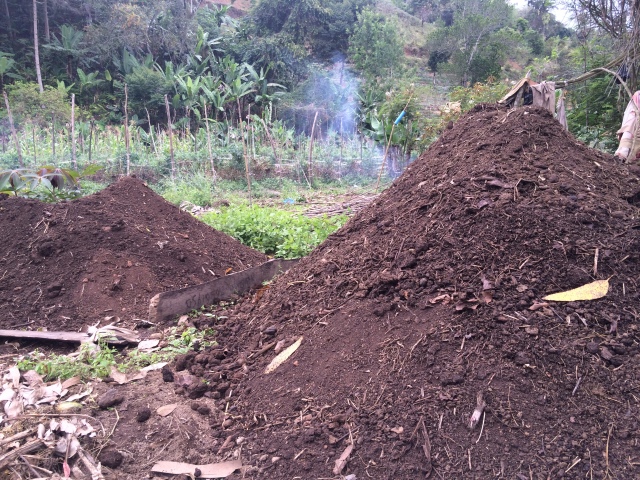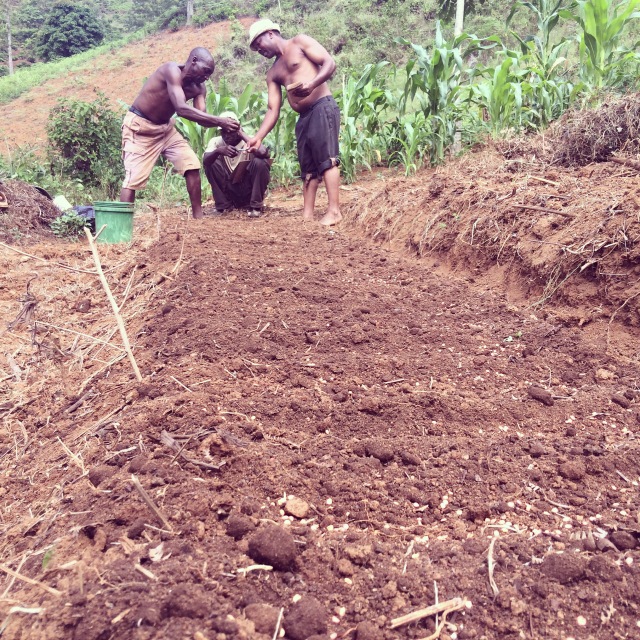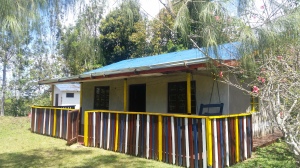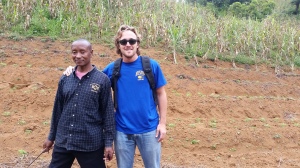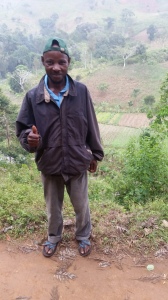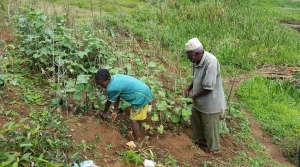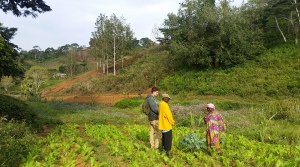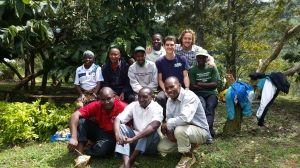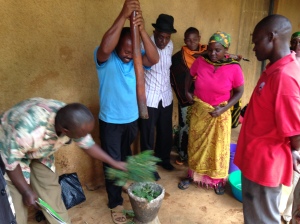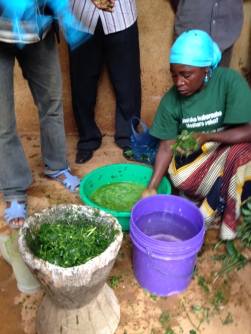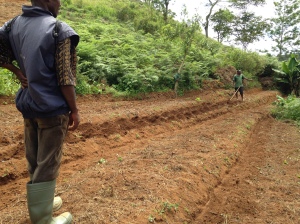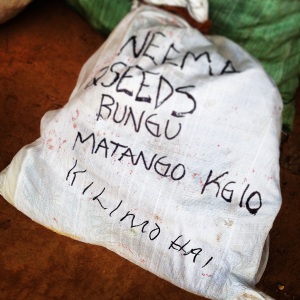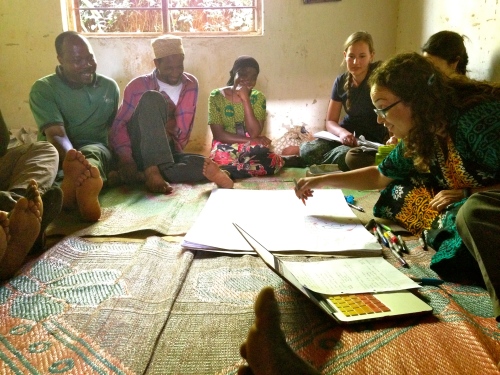The short rainy season is wrapping up in Tanzania, and the change of weather is reminder how pivotal a reliable water supply is to successful farming. The Bungu Project is about to kick off its second round of water management construction this project year, to increase the consistency of water access to Partners’ shambas (farm plots), as part of the Network-wide Water Management Initiative. This round of construction will focus on higher-up, hillside shambas, where irrigation is a constant challenge.
Before this project year, Partners, Project Coordinators and Ground Team identified two main water-related challenges with Bungu Partners’ shambas: seasonal flooding on the low, valley shambas and highly labor-intensive irrigation on the hillside shambas. Flood management construction having been completed in the past few months to tackle the first of these two problems, this second round of construction will focus on the hillside shambas to make irrigation more efficient.
Why is facilitating irrigation important? In Bungu, hillside shambas are not usually adjacent to a water source. And, as smallholder farmers that live on the cusp of the international poverty line, our Partners do all their farming work by hand, unable to afford mechanical inputs. On hillside shambas, they carry water, bucket by bucket or watering can by watering can, uphill to water their crops. Irrigating crops like this is at best exhausting and at worst prohibitive, preventing Partners from getting the most use out of these plots if they are unable to water the entire area regularly. The hillside water management plans, therefore, are able to increase revenue generating potential by allowing Partners to fully utilize the entire area of their shambas.
The basic idea for what to build to make irrigation easier is the following: a tank at the top of each hillside plot, with hoses that descend from the tank to water the crops. Water is delivered to the tank either by connecting a hose to a stream higher up, sometimes several hundred meters away, or by pumping water from below with a manual foot pump.
And the process for getting construction done involves a number of different parties and highlights the coordination involved within the Bungu Project and 2Seeds Network as a whole. First, each Partner identifies a need on his or her shamba for water management construction. Then Senior Project Coordinator and environmental engineer wunderkind Jen tours the shambas in question along with Partners, discussing the challenges with the Partners at each shamba, to develop a solution tailor made to each individual shamba. Next, Bungu Project advisor Miraji takes Jen’s drawn plans, hires contractors and procures the necessary construction inputs, i.e. sand, stone, aggregate and cement, to oversee the construction. And finally, if any materials cannot be delivered directly to the construction site because shambas are usually only accessible by foot, the Partners plan group work days to share the toil of carrying construction materials by hand (or more precisely, by head) from the road to the construction site. The cost of construction, negotiated and tallied by Miraji, will be covered both by donated project funds and the general fund, which covers Network-wide initiatives.
In an earlier blog post, I stressed that the major focus of this project year will be on production. This holds true for water management as well. Weather is a major unknown factor for farming, yet crops thrive with very specific amounts of water – not too much, not too little. Flooding and irrigation therefore present equally daunting threats to production. Too much water and the crops die. Too little water and the crops die. By addressing both flooding and drought, water management construction in Bungu is designed to reduce the risk of weather-related challenges in production. With the risk partially eliminated, production should become more consistent, increasing sales and profit among group members, which of course leads to the ultimate goal of the project: increasing food and income security in Bungu.
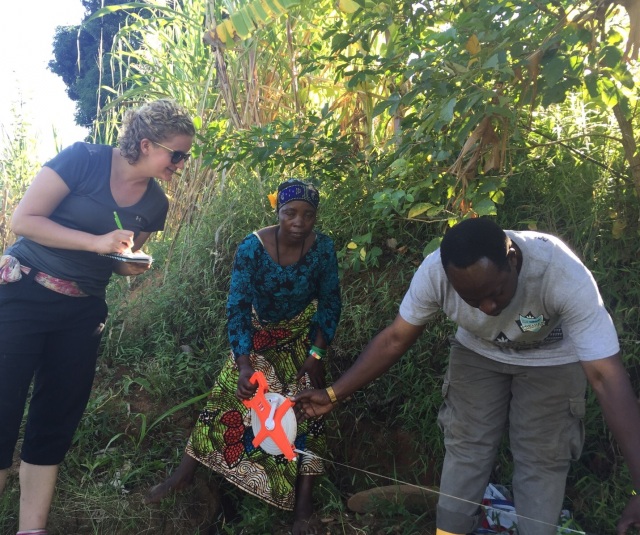
Senior Project Coordinator Jen, Partner Kuruthumu and Advisor Miraji measure space for a water tank at the top of Kuruthumu’s hillside shamba
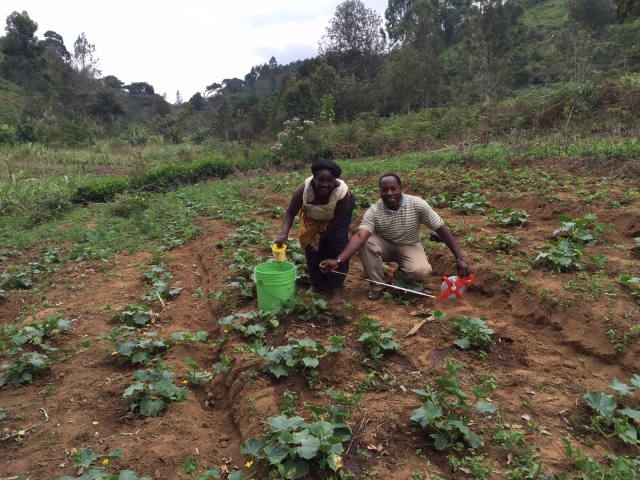
Partner Eva and Advisor Miraji measuring Eva’s hillside shamba to see how much hose will be needed for irrigation
